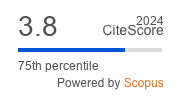Article | Open Access
Conceptualizing Place Borders as Narrative: Observations From Berlin-Wedding, a Neighbourhood in Transformation
| Views: | 1429 | | | Downloads: | 1665 |
Abstract: Place is of central significance to urban planning processes that specifically target community involvement and co-ownership of development decisions. Consequently, the intriguing but often daunting task of understanding how a sense of place emerges, develops, and evolves has been a subject of interdisciplinary study that links the social sciences, humanities, and more recently, cognitive sciences. Since Kevin Lynch’s classic study of urban images and mental maps, borders within cities have either directly or indirectly featured as vital meaning-making elements of place identities. However, despite some remarkable precedents, analysis of political and socio-cultural borders has only begun to link place-making and bordering processes in ways that resonate with urban planning studies. In this article, we will suggest that borders emerge in the embodied creation of social space as a means to interpret the environment and stabilise ways of knowing the wider world. Building on our own previous research on participatory place-making initiatives in Berlin, we will indicate how border stories (i.e., the social communication of neighbourhood distinction, relationality, and transformation) represent vital knowledges of place. These knowledges reflect embodied experiences of place as well as contestations and tensions that characterise place development processes. Perhaps most importantly in terms of planning, the salience of urban borders lies in broadening understanding of how and why places function—or fail to function—as communities.
Keywords: Berlin; borders; participatory place-making; place narratives; urban borders
Published:
© Martin Barthel, James W. Scott. This is an open access article distributed under the terms of the Creative Commons Attribution 4.0 license (http://creativecommons.org/licenses/by/4.0), which permits any use, distribution, and reproduction of the work without further permission provided the original author(s) and source are credited.


